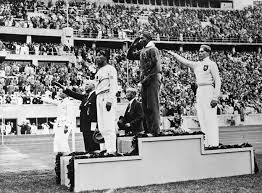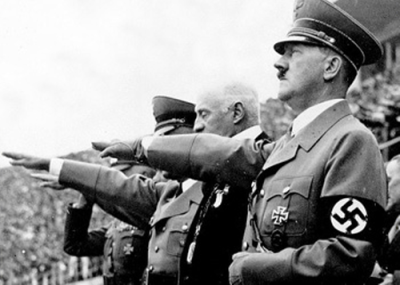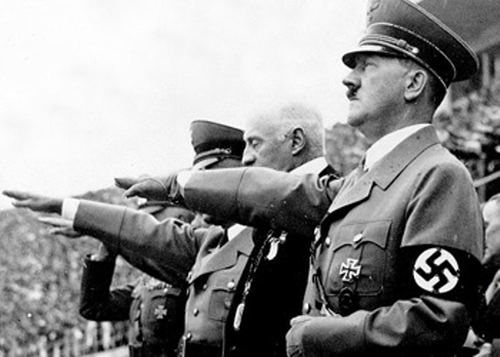
By Emma Southern – If history and film ignite your passion, this is one project well worth backing: a new film entitled Olympic Pride, American Prejudice: The African American Olympians of 1936, by award-winning Director, advertising executive and writer, Deborah Riley Draper.
The 1936 Olympics: An important precursor to the civil rights movement
On the project’s Indiegogo page, Riley Draper explains how the film “traces the trials and triumphs of 18 African Americans during their journey before, during and after the 1936 Olympic Games in Berlin… it explores the racial undertones and prejudices of both the American and German organizers and the impact and effects on the African American athletes.” The film will delve into the amazing prowess of the athletes, but also reveal how they used sport to battle stereotypes and “the second class citizenship they were assigned”.
The 1936 Berlin Olympics were a turning point for African American history, since they were considered a precursor to the civil rights movement in the USA. Riley Draper aims to bring this important film to the Summer Olympics in Brazil in 2016, to commemorate the 80th anniversary of the extraordinary accomplishments of these athletes. In addition to seeking help with funding, Riley Draper is calling for anyone who has information or contact with anyone who participated or was present at the 1936 Olympics, to come forward, in an effort to glean more about this fascinating event. Riley Draper’s campaign, which is up on Indiegogo for only 10 more days, has thus far raised $5,830 of its $25,000 goal, so further funds are sorely needed at this stage.
Donyale Luna: Delving into Despair
In addition to working on Olympic Pride, American Prejudice: The African American Olympians of 1936, Riley Draper is currently conducting research into the tragic life of Donyale Luna, the world’s first African American model to appear on the cover of British Vogue. Donyale was discovered when she was just a uniform-clad schoolgirl in Detroit in 1964, the same year that the Civil Rights Act was passed. She was discovered by photographer, David McCabe, who invited her to New York to try her hand at modeling. By January, 1965, she had landed the cover of Harper’s Bazaar. Masharikiradio.me says that Donyale was at first delighted by her success, as she wrote to a friend: “New York is a dream… a man danced me down Fifth Avenue, and all up and down Broadway men were eyeing and whistling at me, and so many other unbelievable things. I’m really getting the works from head to toe by Harper’s Bazaar’s best! As soon as possible I’ll send you a picture of the new me. I’ll be on top of the world if it takes every breath I have, every muscle of my skinny body. I feel it, I know it. I’ll be some kind of star real soon. Real soon.” Sadly, just three months after her groundbreaking cover, Donyale was told a tragic piece of news: her father had been shot to death by her mother in an act of self-defence. This was the moment when Donyale sunk into the world of drugs, despite having warned fellow models about the evils of marijuana when she had just begun to model. Soon, she was defending her use of LSD, which she referred to as “great”, and her substance abuse issue led her to miss bookings and lose the favor she had curried with famous friends like Klaus Kinski. Donyale died in Rome of an accidental heroin overdose, leaving behind her baby daughter, Dream. Drugtreatment.com notes that “heroin users generally develop a high level of tolerance for the drug, which is why users generally require more of the drug over time.” The constant need for larger doses is also the reason why many users lose their lives to accidental overdoses. Donyale was only 33 when she passed away.
About Deborah Riley Draper
Deborah Riley Draper is perhaps best known for her documentary, Versailles ’73: An American Runway Revolution, which received rave reviews worldwide at a host of festivals, including the Tallin Black Nights Film Festival in Estonia, the Elle Film Fashion Festival in Croatia and the ACMI Fashion Film Festival in Australia. The film, is available on iTunes, hulu, Google Play etc. (see www.versailles73movie.com).
According to the Indianapolis Museum of Art, Versaille 73 played a crucial role in knocking down obstacles for African American women: “(Versailles 73) tells the behind-the-scenes story of the famous runway show where five US designers (Bill Blass, Halston, Stephen Burrows, Anne Klein, and Oscar de la Renta) faced off against France’s top couturiers (YSL, Givenchy, Cardin, Ungaro and Dior) in front of an audience of royals and celebrities, including Princess Grace of Monaco, Christina Onassis, and Andy Warhol, and changed fashion history by breaking the color barrier with African American models.” Hollywood reporter.com notes, “the exquisite black American runway models such as Pat Cleveland… stole the show, getting a standing ovation from the guests. Grace Mirabella, who was present, put Beverly Jonson on the cover of Harper’s Bazaar just four months later.”
The relationship between fashion, politics and culture is perhaps best summarized by Riley Draper, who told The Interiors of Man: “Fashion, politics and advocacy for issues are inextricably linked. The timeline of fashion trends and statements align very clearly with what is happening in any culture. From the turtlenecks for beatniks to black jackets and Black Panthers to the sapeur style in the Congo amidst war and poverty to the first all-vegan fashion show in 2013, fashion speaks volumes about what is on the minds and Facebook pages of pop culture.”



BLACK PEOPLE SHOULD REMEMBER , BLACK SACRIFICERS AS THEY CELEBRATE 4TH OF JULY.BLACK SOLDIERS FROM ALL THE WARS, CIVIL RIGHTS SACRIFICERS WHO WERE BEATEN AND KILLED…..//.